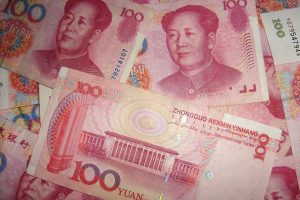While growth in advanced economies is forecast to slip in 2020 to 1.4 percent, emerging market and developing economies should see growth accelerate to 4.1 percent, the World Bank’s January 2020 Global Economic Prospects report says. The overall picture, with global growth rising to 2.5 percent, is not a “broad-based” rebound but rather reflective of assumed improvements in a select number of economies after periods of “substantial weakness” and continued challenges elsewhere.
U.S. growth, the World Bank says, is forecast to slow further to 1.8 percent, “reflecting the negative impact of earlier tariff increases and elevated uncertainty.”
Growth in the East Asia and Pacific region is set to slow, but at 5.7 percent remains among the highest regional growth rates in the world. The World Bank attributes the cooling — from a previously forecasted 5.9 percent in 2019 — to dropping domestic demand in China, “a in addition to sizable external headwinds” including trade policy uncertainty stemming from the U.S.-China trade war.
“This outlook,” the World Bank’s report says, “is predicated on no renewed escalation of trade tensions between China and the United States and a gradual stabilization in global trade. It also assumes that authorities in China continue to implement monetary and fiscal policies to offset the negative impact of weakening exports.” Arguably, that’s asking a lot given the Trump administration’s propensity to change course at the speed of a tweet.
China’s growth, estimated in 2019 at 6.1 percent is forecasted to slow to 5.9. The World Bank’s future forecasts, for 2021 and 2022 at this juncture, foresee further falls for Chinese growth. Elsewhere in the region, slight recovery is expected, though some individual countries are still set to face their own slowdowns. Fiji, Indonesia, Laos, Myanmar, the Philippines, Thailand and Timor Lest, all notch better growth in the 2020 forecast; meanwhile, Cambodia, China, Malaysia, Mongolia, Papua New Guinea, the Solomon Islands and Vietnam are all set to slow.
Central Asia is lumped in with Europe in the World Bank’s report; the entire region is set to hit a three-year-low of 2 percent growth in 2019 and is expected to rebound in 2020 to 2.6 percent. Growth in Central Asia, the World Bank says, “is anticipated to slightly moderate to 4.4 percent following agreed-upon oil production cuts by Kazakhstan.” Slowing growth in China, the report notes, could echo into Central Asia, however. Of the five Central Asian states, only Turkmenistan and Uzbekistan are forecasted to see rises in their growth rates in 2020 — the former from an estimated 5 percent in 2019 to 5.2 percent and the latter from an estimated 5.5 percent in 2019 to 5.7 in 2020. Tajik growth is expected to slow from an estimated 6.2 percent in 2019 to 5.5 percent in 2020; Kazakhstan from 4.0 to 3.7 percent and Kyrgyzstan from 4.2 to 4.0 percent. Russia’s anticipated rebound, from 1.2 percent growth estimated for 2019 to 1.6 percent in the 2020 forecast could have ramifications for Central Asia. But swings in commodity prices could derail both Russia and Kazakhstan, with regional effects.
Meanwhile, growth in South Asia is expected to rise to 5.5 percent this year after an estimated tumble to 2.9 percent in 2019. Within that overall rise, growth in India is forecasted to cool to 5 percent in its fiscal year ending in March before recovering through the rest of 2020 and into 2021 at 5.6 percent; Pakistan should bottom out by the end of its fiscal year in June at 2.4 percent and rebound in 20/21 to 3 percent. Growth in Afghanistan, estimated in 2019 at 2.5 percent is expected to rise further to 3 percent. Both Sri Lanka and the Maldives are also anticipated to see rising growth rates. Risks for the region are rooted in geopolitical tensions and lack of progress on reforms as well as vulnerabilities in the financial sector.
Across the Asia-Pacific as we cover it here at The Diplomat, the forecast is a mixed bag. China exerts a lot of economic gravity, so its success or failure in navigating slowing domestic demand has implications across Asia. Likewise, while the phase one deal between the United States and China is cited by the World Bank as de-escalating trade tensions, the undertone is caution. “A re-escalation of trade tensions and protracted policy uncertainty could erode confidence and weigh on global activity,” the report notes.

































